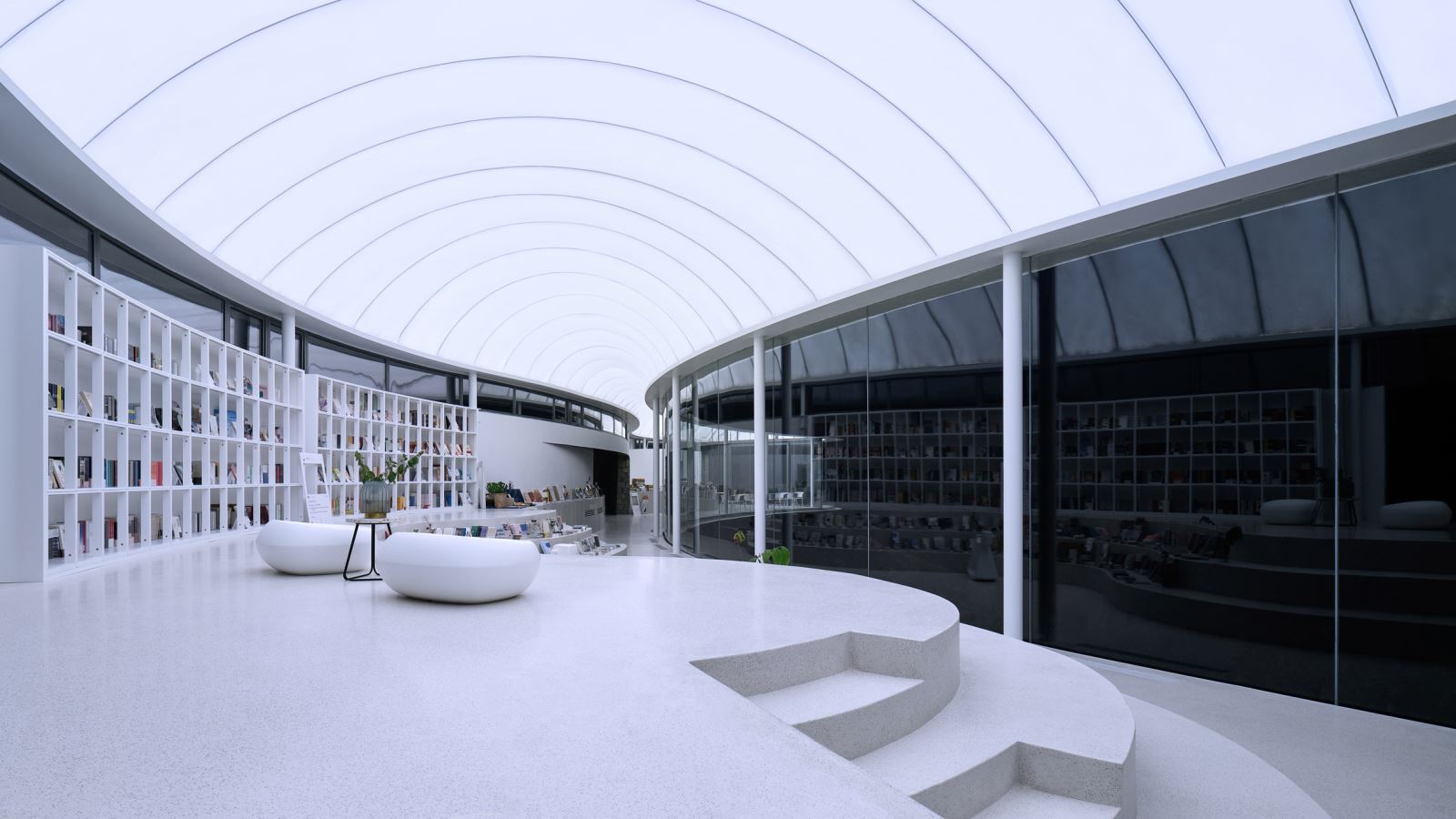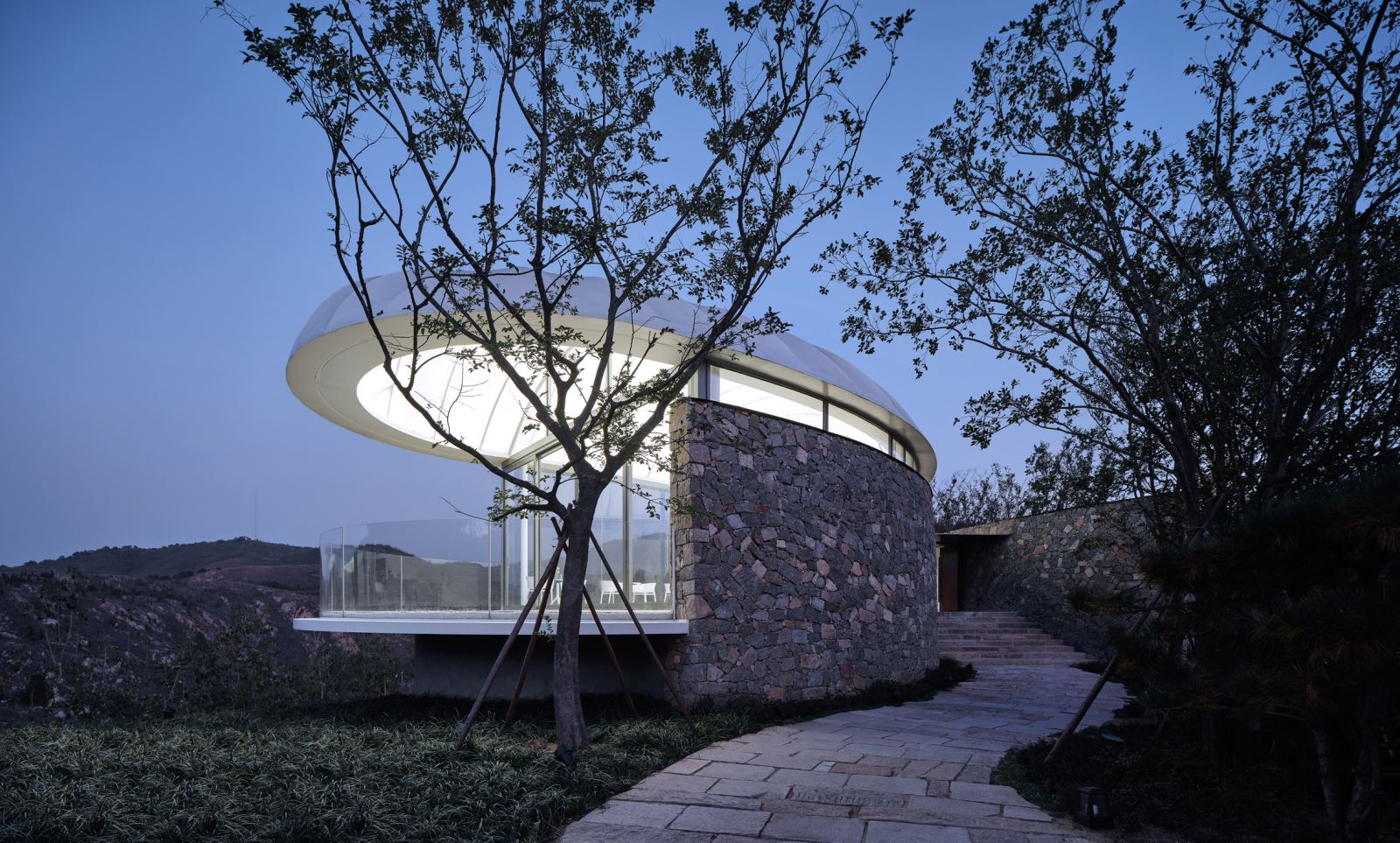White membrane stretches over the curved rooftop of Jiunvfeng Study, a mountainside visitor centre built by Gad Line+ Studio above Dongximen Village in Shangdong, China.

A lightweight steel frame forms the delicate skeleton of the pavilion, which perches on a rocky ridge looking towards Mount Tai.
Considered China's most famous sacred mountain, Mount Tai has been a place of worship for 3,000 years.
The pavilion, commissioned by Tai'an's tourism body, has panoramic views over the sacred mountain and Shenlong Grand Canyon.
Curved glass walls along the outward-facing side form a long viewing platform for visitors. At one end, a coffee shop has tables to sit at while taking in the scenery.

Its back wall is built of rocky rubble, splitting to curve either side of the entrance. Clerestory windows run along the top of the wall before the start of the curved roof.
LED lighting strips are built into the double-layer membrane of the canopy, which has an insulating layer reflective foil.

An arc-shaped ring beam loops around the perimeter of the roof, with 28 steel arched keels connecting to form the frame for the double-layer membrane.
The rubble walls are made from local stone selected by the architects for its colour.



